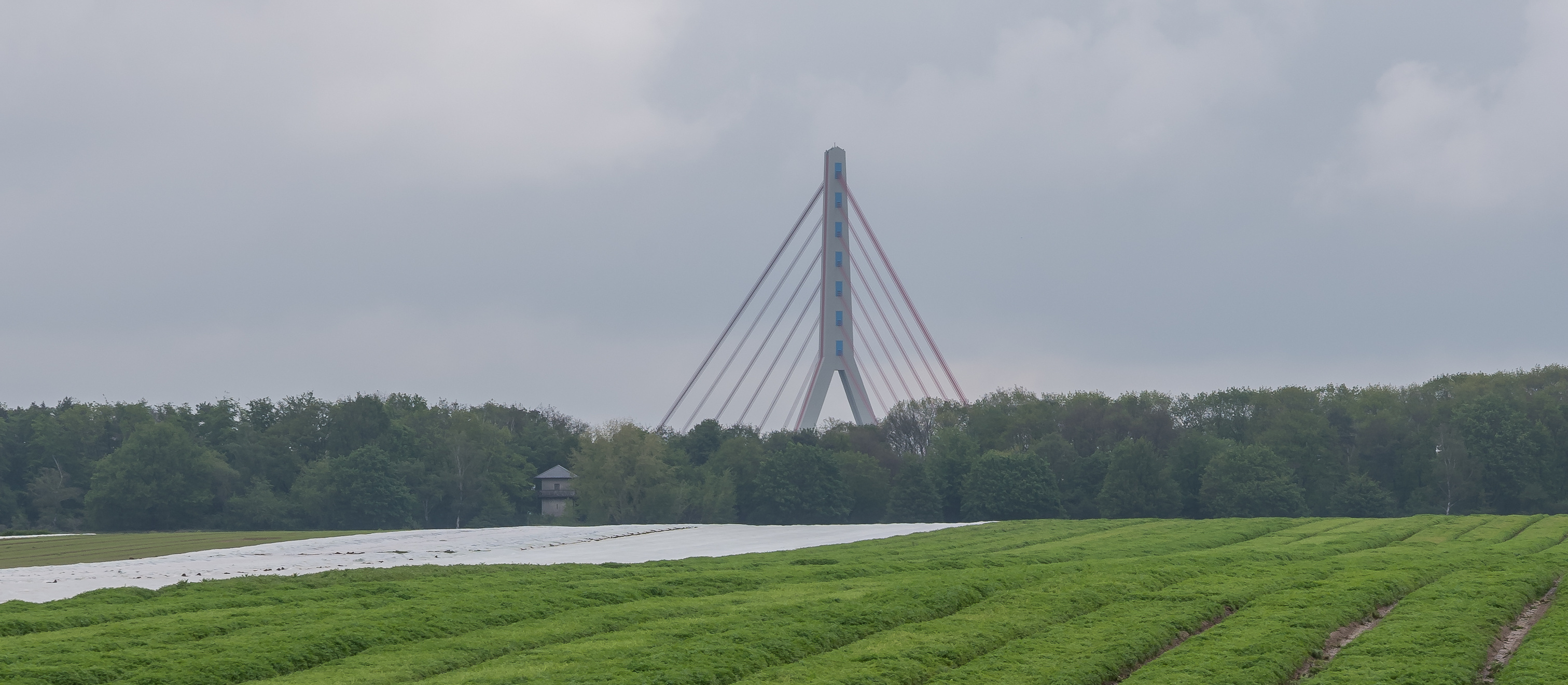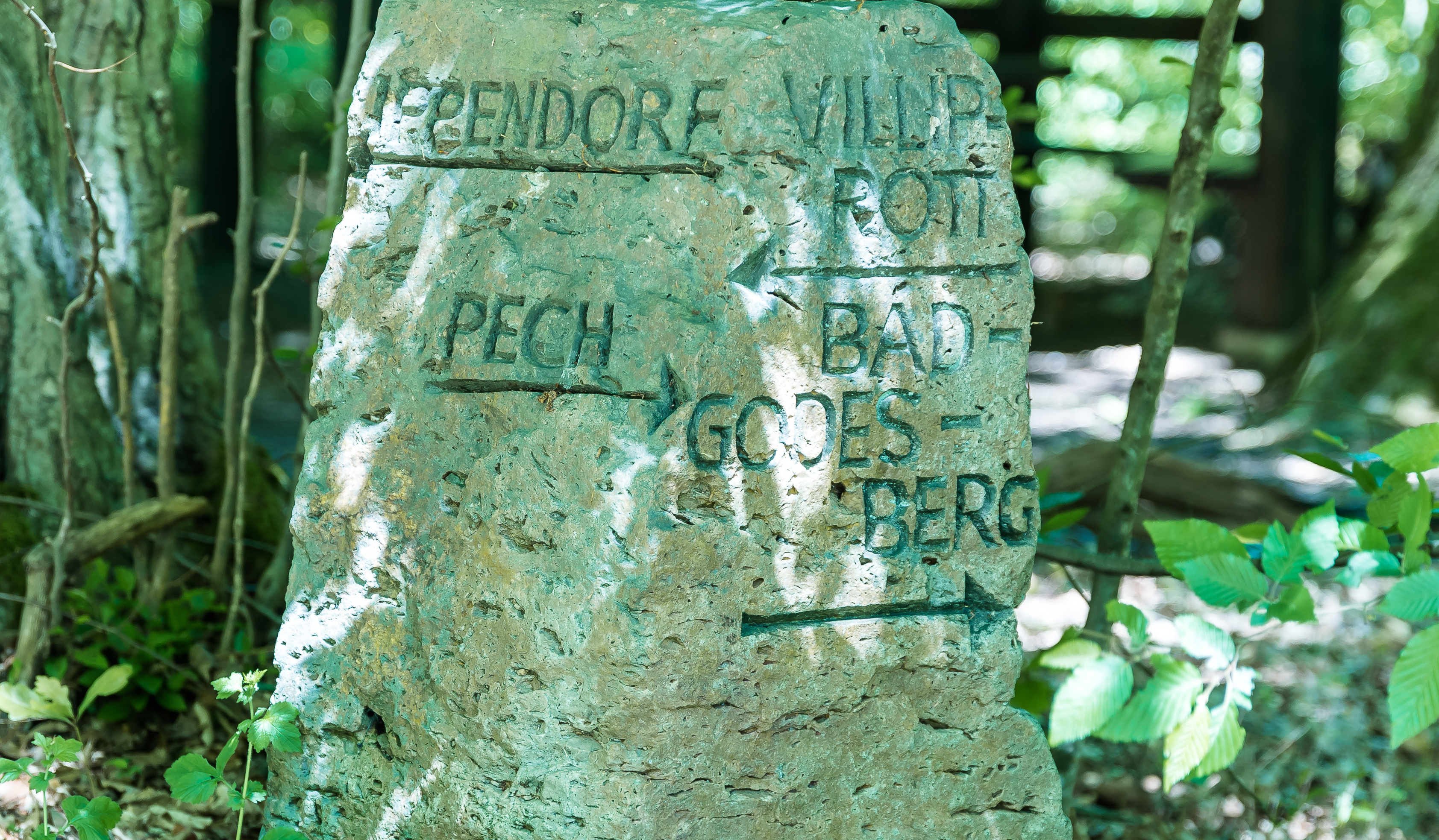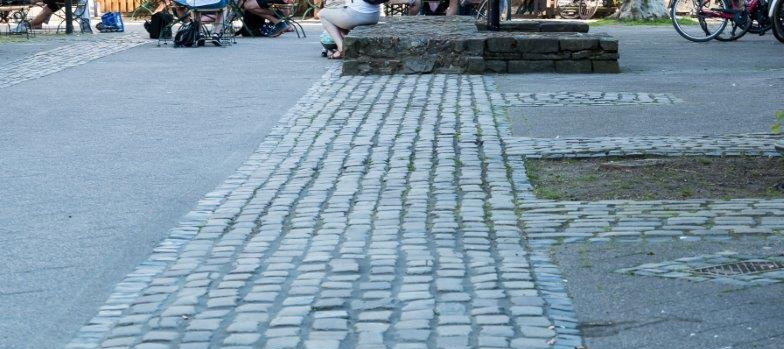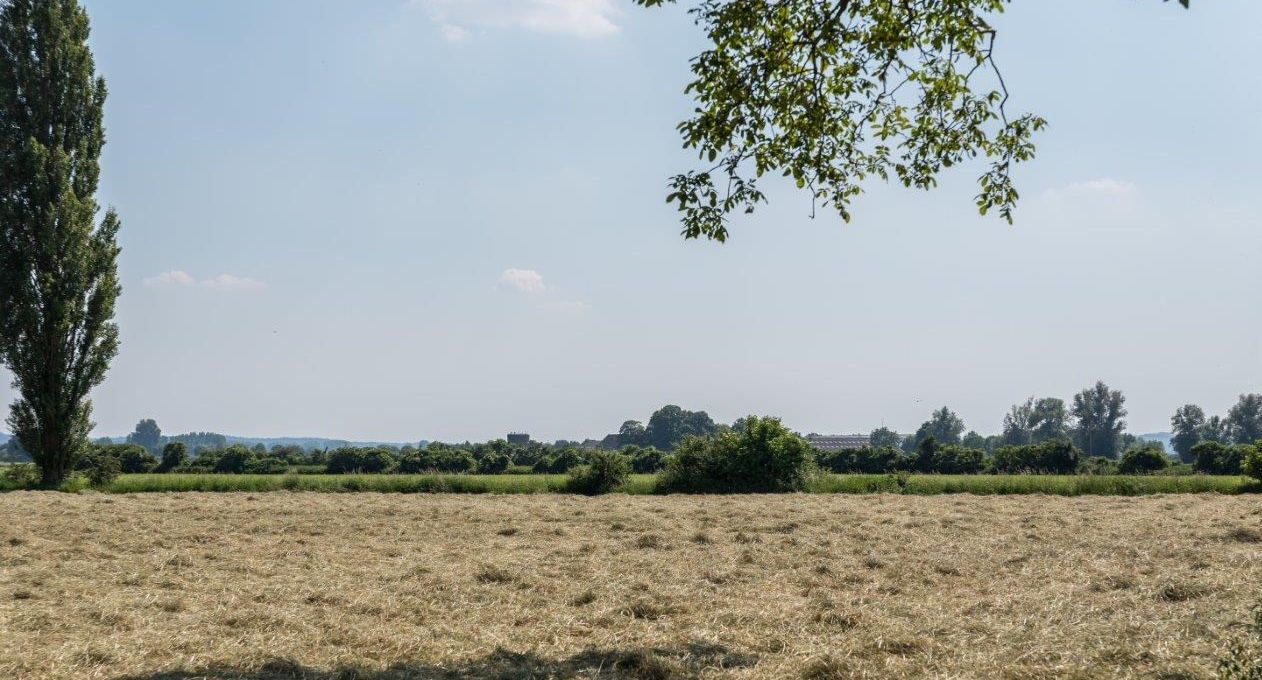All roads lead to Rome ...
All roads lead to Rome ...
The Roman province of Lower Germania
The Roman province of Lower Germania
Bad Münstereifel - Iversheim
Bad Münstereifel - Iversheim

A Roman lime kiln in the information centre at Iversheim
The archaeological remains of a Roman lime kiln dating from the 1st to the 3rd century AD confirms that the Roman military produced lime on an industrial scale. A visitor centre showcases three of the surviving kilns, a series of models and casts of Roman artefacts. A local heritage group, Dorfverschönerungsverein Iversheim e. V., runs the information centre and offers a varied programme of events, workshops and activities.
Access: public
Neuss-Reckberg
Neuss-Reckberg

The reconstructed Reckberg watchtower over the Rhine shows how effective the original version would have been.
Reckberg is the only place on the Lower Germanic Limes where evidence has been found of a small Roman fort with a watchtower. It stood here from the early 2nd century AD until the mid 3rd century AD. From here the Roman guards had an unimpeded view of the surrounding area. A somewhat outdated reconstruction of a Roman watchtower still stands near the original site.
Access: public and private
Note:
The archaeological remains that make up the Lower Germanic Limes (NGL) UNESCO World Heritage Site are all very well preserved. Most of these structures are buried underground and well protected. Some are visible above ground. So far, there is very little on-site information explaining the history and significance of these finds. We are currently working on a comprehensive package of information and presentation resources to promote public understanding of these sites.
Bonn - Cluster "Kottenforst Süd"
Bonn - Cluster "Kottenforst Süd"

A milestone in the southern part of the Kottenforst forest
At various times the southern part of the Kottenforst forest served as a training area for the Roman army. We now know that there were 12 training camps in the area between 1 and 2 AD. A number of earthworks can still be seen. Several of the hiking trails around Villiprott and Heiderhof wend their way through these old training grounds.
Access: private and public
Note:
The archaeological remains that make up the Lower Germanic Limes (NGL) UNESCO World Heritage Site are all very well preserved. Most of these structures are buried underground and well protected. Some are visible above ground. So far, there is very little on-site information explaining the history and significance of these finds. We are currently working on a comprehensive package of information and presentation resources to promote public understanding of these sites.
Dormagen
Dormagen

You can still see the line of the camp’s ramparts in the cobblestones in front of Dormagen’s old town hall (Altes Rathaus).
A Roman cavalry camp occupied the site of present-day Dormagen from around 80 AD until approx. 161 AD. This is the first time that excavations along the Lower Germanic Limes have revealed traces of the pits that collected horse urine, confirming the existence of stables. After the original fort was destroyed in a fire, it was replaced by a smaller fortress. It was built in a corner of the old fort with the help of the existing ramparts and remained in use until around 430 AD. Traces of the structure of the ancient cavalry fort are still visible in the city today.
Access: public and private
Note:
The archaeological remains that make up the Lower Germanic Limes (NGL) UNESCO World Heritage Site are all very well preserved. Most of these structures are buried underground and well protected. Some are visible above ground. So far, there is very little on-site information explaining the history and significance of these finds. We are currently working on a comprehensive package of information and presentation resources to promote public understanding of these sites.
Kleve-Keeken
Kleve-Keeken

Panoramic view of the old military camp
In 2016 evidence was found for the double ditch construction of a large Roman fort strategically positioned on the eastern point of Batavi Island, where the Rhine splits into the Waal and the Lower Rhine. The exact date of the camp is still to be established. It is likely that timber was used for any interior buildings. Only one other camp along the Lower Germanic Limes is known to have a double ditch construction (Till-Kapitelshof).
Access: private
Note:
The archaeological remains that make up the Lower Germanic Limes (NGL) UNESCO World Heritage Site are all very well preserved. Most of these structures are buried underground and well protected. Some are visible above ground. So far, there is very little on-site information explaining the history and significance of these finds. We are currently working on a comprehensive package of information and presentation resources to promote public understanding of these sites.
Kleve-Reichswald
Kleve-Reichswald

View of the road and cycle track following the path of the old Limes-Straße (in the field)
Evidence for a 1.5km section of the Limes-Straße has been discovered near Kleve-Reichswald. The Limes-Straße was the main road that connected the Roman cities of Xanten and Nijmegen (NL). In several places the surviving sections of the road’s foundations are 75cm thick and 8.2m wide. This is one of the best preserved sections of the Lower Germanic Limes.
Access: private and public
Note:
The archaeological remains that make up the Lower Germanic Limes (NGL) UNESCO World Heritage Site are all very well preserved. Most of these structures are buried underground and well protected. Some are visible above ground. So far, there is very little on-site information explaining the history and significance of these finds. We are currently working on a comprehensive package of information and presentation resources to promote public understanding of these sites.
Bedburg-Hau
Bedburg-Hau

Panoramic view of the old military fort
A total of seven military camps and an auxiliary fort confirm that from the first half of the 1st century AD until the early 2nd century AD this was one of the most important military locations along the Lower Germanic Limes. Several sections of the camp have been built over, while the remainder lies beneath farmland. The Sommerlandstraße cycle path provides easy access by bike.
Access: private, public, other
Note:
The archaeological remains that make up the Lower Germanic Limes (NGL) UNESCO World Heritage Site are all very well preserved. Most of these structures are buried underground and well protected. Some are visible above ground. So far, there is very little on-site information explaining the history and significance of these finds. We are currently working on a comprehensive package of information and presentation resources to promote public understanding of these sites.






